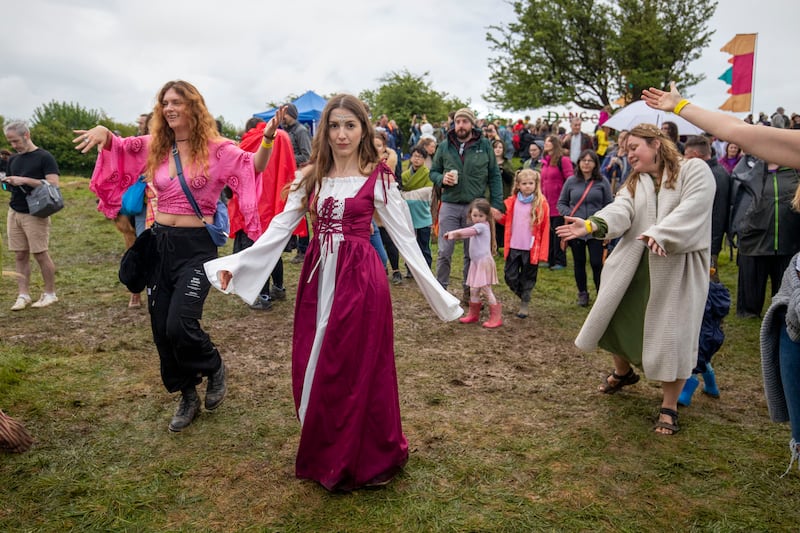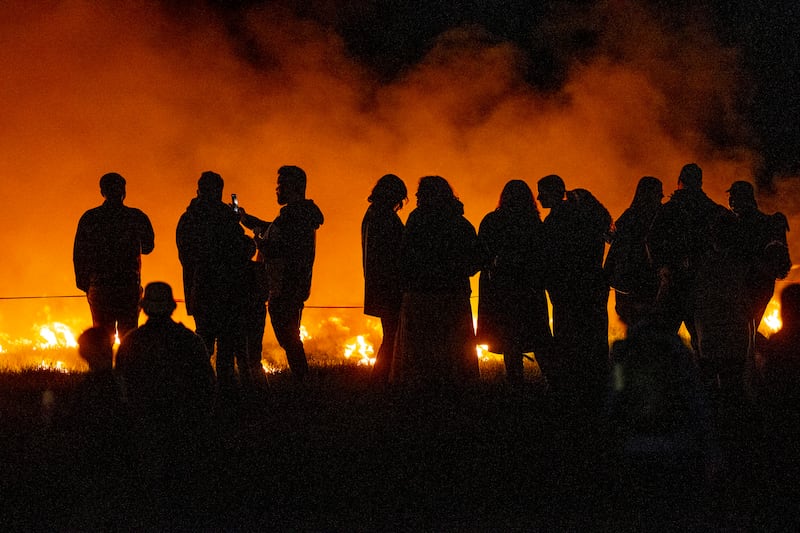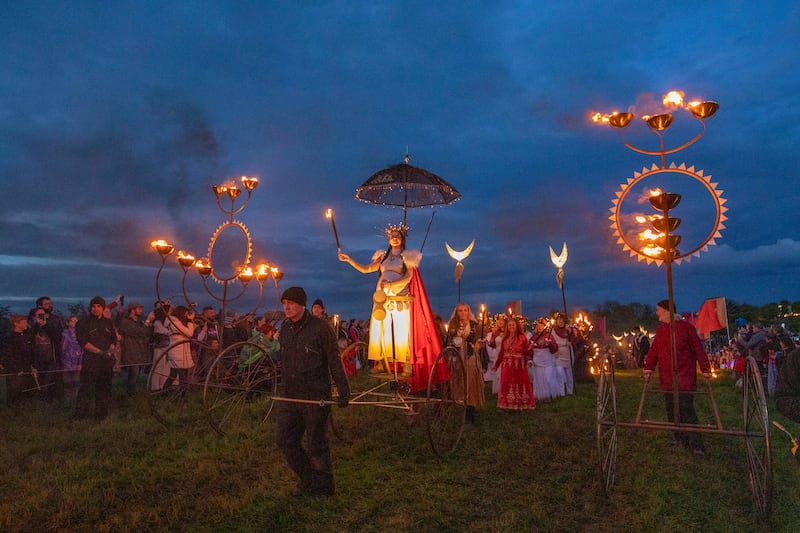Five thousand festival goers gathered on Saturday evening to celebrate Bealtaine at the Hill of Uisneach in Co Westmeath.
One of Ireland’s oldest traditions, dating back to when the high king would light the Bealtaine fire to signal the arrival of summer, the festival has been revived in recent years at the midlands venue at Loughnavalley near Mullingar.
“It’s a pastoral, an agricultural type of event,” explains Francez Cody, chair of Uisneach, the event organisers. “The high king would have had bards, people meeting up from around the country, there would have been games, markets, much of what we tried to replicate.
“We had children’s games and adult games, craftwork, smiths, iron workers and wood turners. What we try to do, rather than recreate what they did years ago, we try to get people involved so they can have a hands-on experience.
READ MORE


“We look for people who are hand crafters or have a traditional trade that can bring that sparkle back and remind us how our clothes are made. You’d be surprised how many people who don’t know and when they do find out they’re mad into it.
“People take what they’ve learned at the festival and bring it back to us through comments or photographs [on social media.]”
The modern version of Bealtaine was originally a music festival first organised in 2012. Since then, the format has been changed to include other activities and encourage more families to attend. It cost €40 for a ticket, or €90 for a family of four.


In 2017, President Michael D Higgins attended to light the ceremonial fire at the event. “He would have been the first head of state to have lit the fire in maybe over 1,000 years,” says Cody.
“Since then, as a heritage event, we’ve been building on it. It’s really successful. A lot of families will go to it, we encourage the little ones so they can get into heritage.
“We have tours as well during the festival so people have a bit of context, they’re not just rocking up to a beautiful landscape knowing nothing about it.

“We have a heritage tent there, speakers come in be it farming, mythology, archaeology, we have speakers delivering hour-long talks on those subjects. It’s very much a community event.”
Amid the various activities, the festival culminates in a procession where attendees make their way to the ceremonial lighting of the Bealtaine fire. This year, Cody says visitors from as far away as New Zealand, Australia and Mexico were present at the procession.
The Bealtaine fire on Saturday night was lit by Alan Clarke, son of the owner of the Hill of Uisneach, and his fiancee Lauren who are to be married in August.












